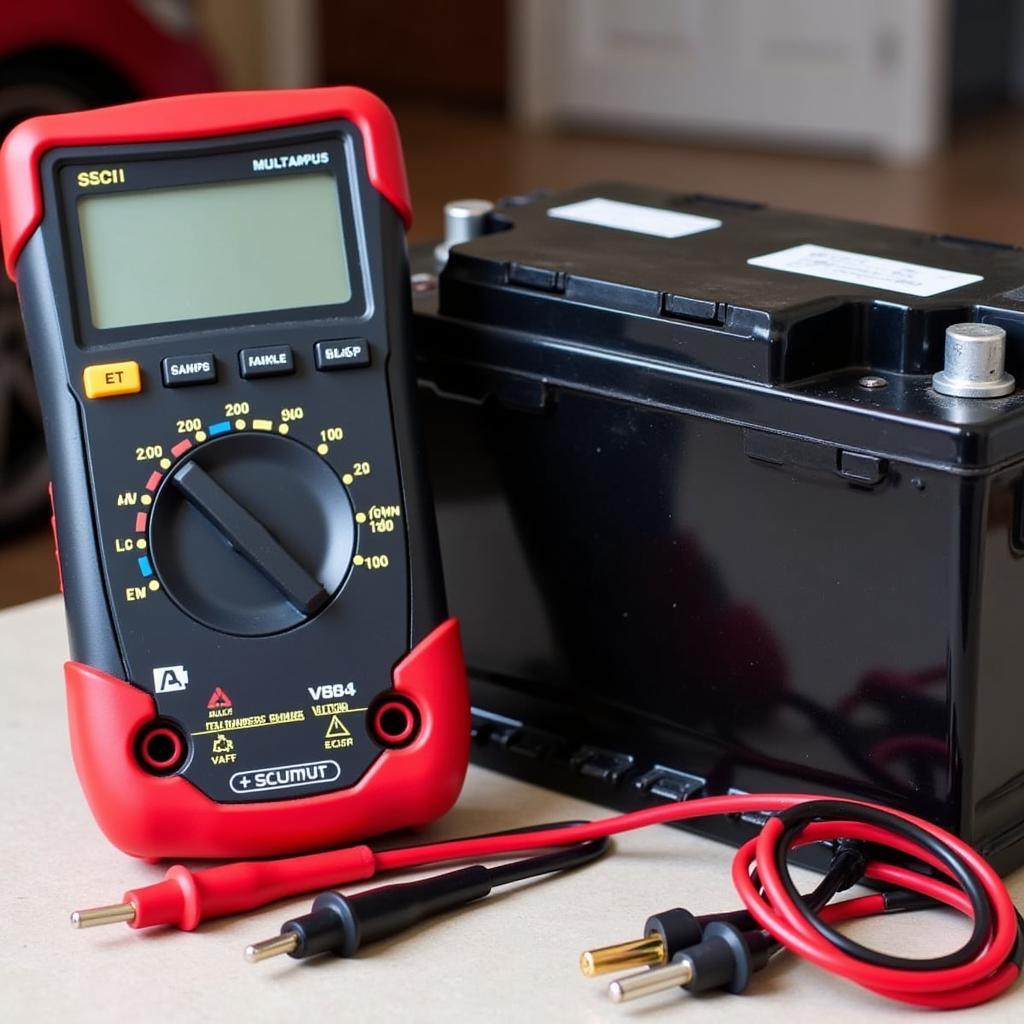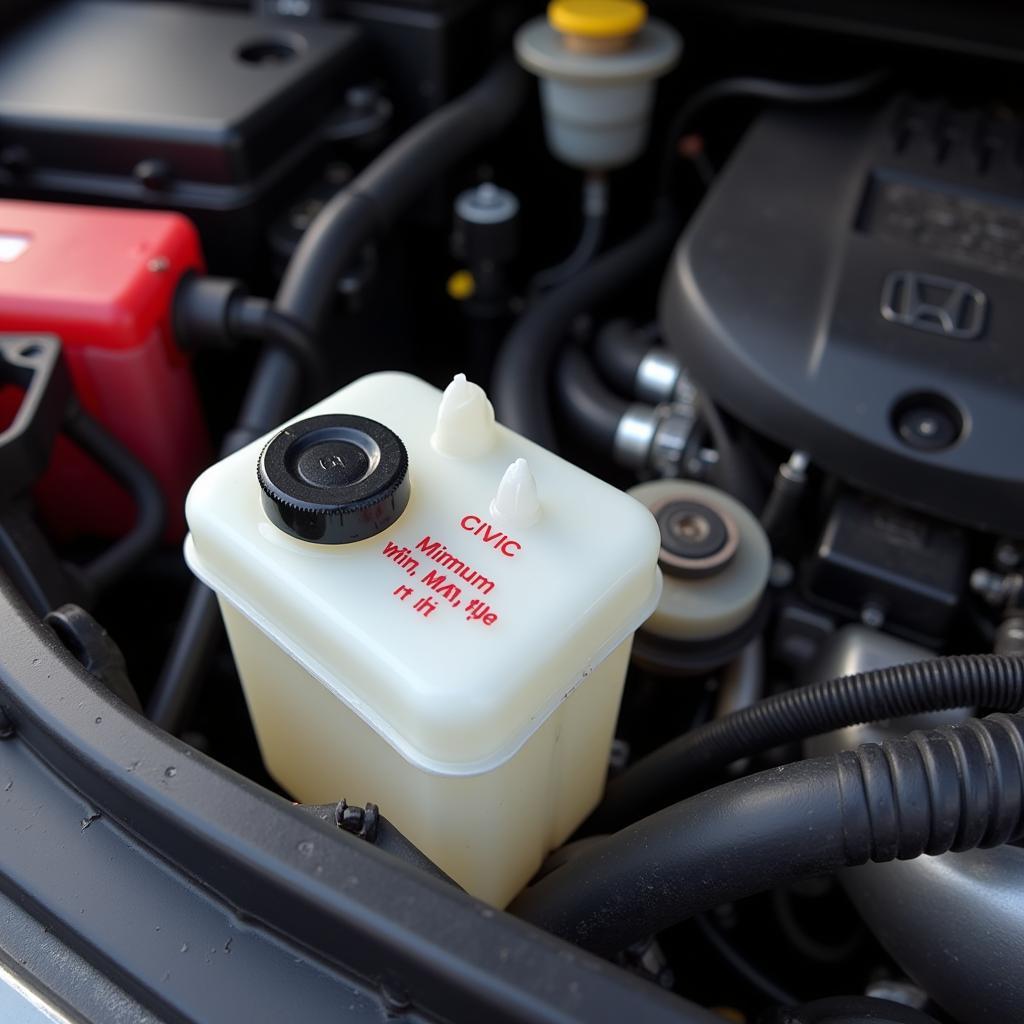Testing car battery drain with a multimeter is a crucial skill for any car owner. A dead battery can be more than just an inconvenience; it can indicate underlying problems with your vehicle’s electrical system. This guide will equip you with the knowledge and step-by-step instructions to diagnose battery drain effectively using a multimeter, saving you time and money.
Understanding Car Battery Drain
Before we dive into the testing process, it’s essential to understand what constitutes battery drain. A healthy battery slowly discharges over time, but excessive drain can lead to a dead battery, especially overnight. This excessive drain is often caused by a “parasitic draw,” where a component continues to consume power even when the car is off. Identifying and addressing this parasitic draw is key to resolving recurring battery issues.
Preparing for the Test
Proper preparation is essential for accurate results when testing car battery drain with a multimeter. Here’s what you’ll need:
- A Digital Multimeter: An essential tool for measuring electrical current.
- Protective Gear: Safety glasses and gloves are recommended.
- Patience: The testing process requires some waiting time.
First, disconnect any aftermarket accessories that might draw power, such as dashcams or radar detectors. Next, ensure all interior lights, doors, and the trunk are closed. This eliminates any potential sources of normal drain that could interfere with your readings. Remember, even a small glove box light can skew your results.
After preparing your tools and vehicle, it’s time to set up your multimeter. Select the DC amps setting, usually indicated by “A” with a straight line above it. Most multimeters require you to plug the red lead into the “A” or “mA” port and the black lead into the “COM” port. Double-check your multimeter’s manual for specific instructions. Understanding these basics is the first step in effectively testing car battery drain with a multimeter.
 Multimeter Setup for Battery Drain Test
Multimeter Setup for Battery Drain Test
Performing the Test: Step-by-Step Instructions
Now, let’s get to the heart of the matter: how to test car battery drain with a multimeter.
-
Disconnect the Negative Battery Cable: Carefully remove the negative (black) cable from the battery terminal. This isolates the battery from the vehicle’s electrical system.
-
Connect the Multimeter: Connect the red lead of your multimeter to the negative battery terminal and the black lead to the negative battery cable. This places the multimeter in series, allowing it to measure the current flowing out of the battery.
-
Observe the Initial Reading: You’ll likely see a spike in current initially, which should quickly settle down. A reading above 50 milliamps (0.05 amps) typically indicates excessive drain. Similar to a car battery current draw, this higher than normal reading suggests a problem.
-
Wait and Monitor: Allow the car to sit undisturbed for at least 30 minutes, preferably longer, to allow modules to go to sleep. Modern cars have various modules that can draw power even when the car is off. The current draw should gradually decrease as these modules power down.
-
Identify the Culprit: If the current draw remains high, start systematically removing fuses one at a time while observing the multimeter reading. A significant drop in current when a specific fuse is removed indicates the circuit connected to that fuse is the source of the drain. Just like performing battery drain parasitic draw testing, this step is critical for pinpointing the problem.
“Testing each fuse methodically can be time-consuming, but it’s the most effective way to pinpoint the exact source of the drain,” says automotive electrical systems expert, David Miller. “Skipping this step can lead to misdiagnosis and unnecessary repairs.”
Interpreting the Results
Once you’ve identified the circuit causing the drain, consult your vehicle’s wiring diagram to determine which components are connected to that circuit. This will help you narrow down the specific component causing the excessive draw. Common culprits include faulty interior lights, glove box lights, trunk lights, door switches, or even a malfunctioning radio. Issues like a car battery died overnight are often traced back to these seemingly minor components.
“Sometimes, the problem isn’t a faulty component but an aftermarket accessory improperly installed,” adds Miller. “Always double-check the wiring of any recently installed accessories.”
Frequently Asked Questions (FAQs)
- What if I don’t see a significant drop when removing fuses? The drain could be related to the battery itself or a more complex issue requiring professional diagnosis. Consider checking resources related to a battery dies overnight no parasitic draw.
- What if my multimeter reading fluctuates? This can indicate a loose connection or a component that intermittently draws power.
- Can a bad alternator cause battery drain? While a bad alternator won’t directly cause a parasitic draw, it can prevent the battery from charging properly, leading to similar symptoms. You might find helpful information related to the battery icon on dashboard.
- How often should I test my battery drain? It’s a good idea to test your battery drain if you notice your battery struggling to start the car or if it dies overnight.
- Is it safe to perform this test myself? Yes, as long as you follow the safety precautions and instructions outlined in this guide.
- What should I do if I can’t identify the source of the drain? It’s best to consult a qualified automotive electrician for further diagnosis and repair.
- Can extreme temperatures affect battery drain? Yes, extreme temperatures, both hot and cold, can impact battery performance and potentially increase drain.
Testing car battery drain with a multimeter empowers you to take control of your vehicle’s electrical health. By understanding the process and following these steps, you can diagnose and address battery drain issues effectively, avoiding the frustration and expense of a dead battery. Remember to always prioritize safety and consult a professional if you’re unsure about any part of the process.

